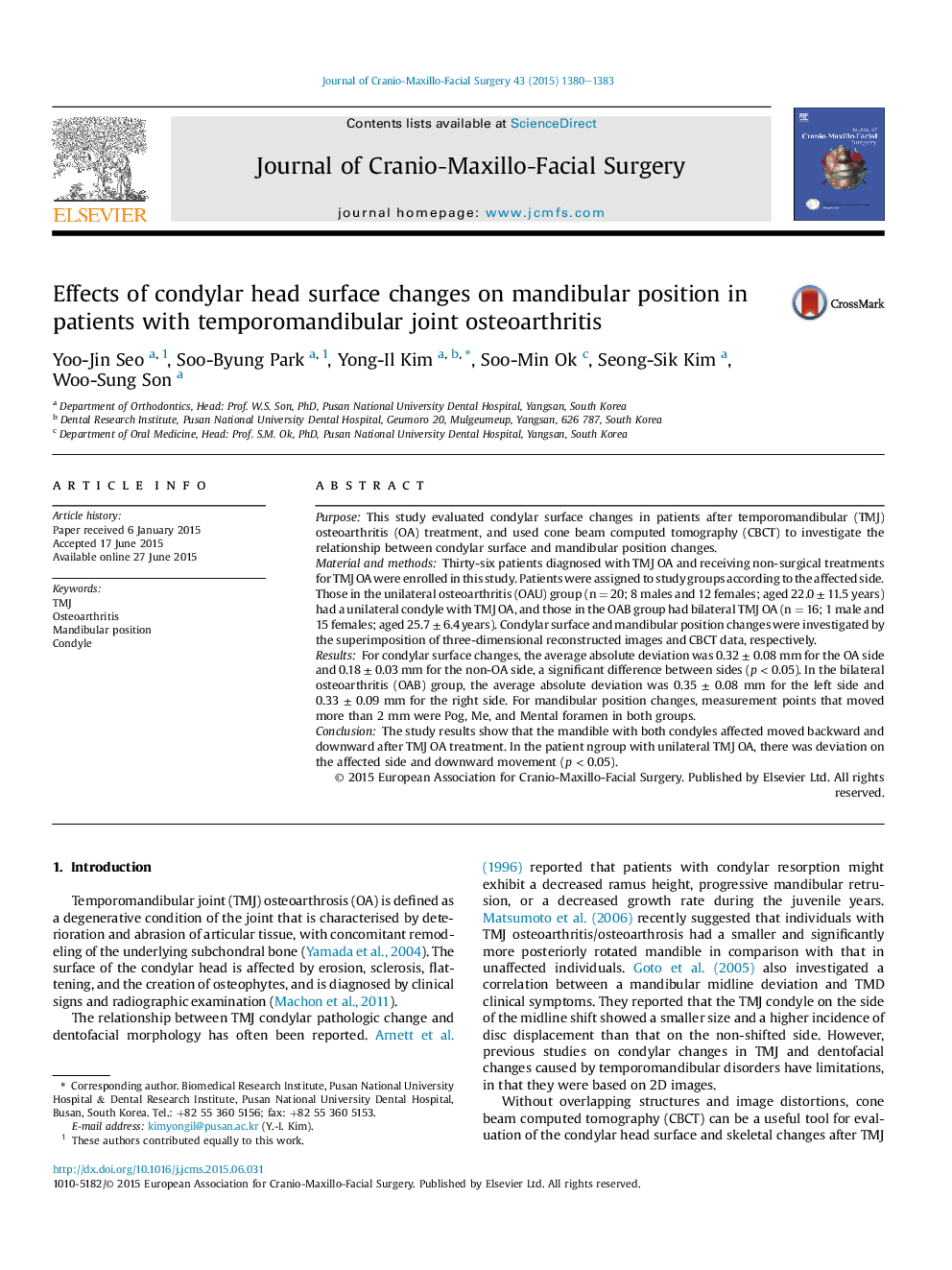| Article ID | Journal | Published Year | Pages | File Type |
|---|---|---|---|---|
| 3142395 | Journal of Cranio-Maxillofacial Surgery | 2015 | 4 Pages |
PurposeThis study evaluated condylar surface changes in patients after temporomandibular (TMJ) osteoarthritis (OA) treatment, and used cone beam computed tomography (CBCT) to investigate the relationship between condylar surface and mandibular position changes.Material and methodsThirty-six patients diagnosed with TMJ OA and receiving non-surgical treatments for TMJ OA were enrolled in this study. Patients were assigned to study groups according to the affected side. Those in the unilateral osteoarthritis (OAU) group (n = 20; 8 males and 12 females; aged 22.0 ± 11.5 years) had a unilateral condyle with TMJ OA, and those in the OAB group had bilateral TMJ OA (n = 16; 1 male and 15 females; aged 25.7 ± 6.4 years). Condylar surface and mandibular position changes were investigated by the superimposition of three-dimensional reconstructed images and CBCT data, respectively.ResultsFor condylar surface changes, the average absolute deviation was 0.32 ± 0.08 mm for the OA side and 0.18 ± 0.03 mm for the non-OA side, a significant difference between sides (p < 0.05). In the bilateral osteoarthritis (OAB) group, the average absolute deviation was 0.35 ± 0.08 mm for the left side and 0.33 ± 0.09 mm for the right side. For mandibular position changes, measurement points that moved more than 2 mm were Pog, Me, and Mental foramen in both groups.ConclusionThe study results show that the mandible with both condyles affected moved backward and downward after TMJ OA treatment. In the patient ngroup with unilateral TMJ OA, there was deviation on the affected side and downward movement (p < 0.05).
